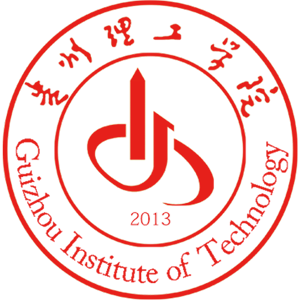详细信息
文献类型:期刊文献
中文题名:石膏-赤泥协同处理资源化利用
英文题名:RESOURCE REUTILIZATION FOR PHOSPHOGYPSUM AND RED MUD THOUGH CO-TREATMENT
作者:路坊海 柴洪云 何海军 魏壮强 舒娅 陈肖虎 龙显泽
第一作者:路坊海
机构:[1]贵州理工学院材料与能源工程学院,贵阳550003;[2]国家电投集团贵州遵义产业发展有限公司,贵州遵义564300
第一机构:贵州理工学院材料与能源工程学院
年份:2024
卷号:42
期号:3
起止页码:156-163
中文期刊名:环境工程
外文期刊名:Environmental Engineering
收录:CSTPCD;;CSCD:【CSCD_E2023_2024】;
基金:贵州省科技支撑计划(黔科合支撑[2023]一般243);贵州理工学院高层次人才科研启动经费项目(XJGC20181010);贵州省高层次创新型人才培养项目(GZSQCC2018002)。
语种:中文
中文关键词:磷石膏;赤泥;协同处理;资源化利用;中试试验
外文关键词:phosphogypsum;red mud;con-treatment;resource utilization;pilot test
摘要:磷石膏和赤泥是典型的2大工业废渣,排放量大、成分复杂、环境风险高,再利用难度较大。基于磷石膏属高钙碱性,赤泥为富铝硅酸性的矿物特点,采用两渣协同处理实现钙质循环再用同步回收铝钠的技术思路。小试试验结果表明:最适宜工艺条件为烧结温度850℃,2倍还原剂理论添加量,C/S=2.1,N/A=1.1,烧结时间7 min,该条件下铝和钠的回收率分别为82.14%和83.48%。在此条件下进行了中试试验,结果表明:相较于小试试验,中试试验获得的铝钠回收率略低(Al_(2)O_(3)76.32%,Na_(2)O 81.25%);其烧结熟料及浸出渣XRD分析表明,与熟料比较,渣中铝酸钠峰值减弱,而钙硅等化合物峰值加强,表明熟料中铝钠溶出效果良好,钙硅等化合物进入渣相;从SEM图可见,熟料微观形貌疏松,表明烧结质量良好;而浸出渣粒度变细、分散,表明熟料浸出性能优异;采用碳酸化分解溶出工序制备的铝酸钠溶液,所得Al(OH)_(3)产品相比氧化铝企业种分工艺生产的Al(OH)_(3),两者Al_(2)O_(3)含量相当,但前者纯度更低,这可能是源于原料和工艺的差异,且浸出渣碱含量较高(Na_(2)O 3.19%),制约了其大规模利用。试验验证了两渣高温协同处理资源化利用的技术思路可行,但该技术在制备合格Al(OH)_(3)产品及降低渣中碱含量方面仍需进一步优化。
Phosphogypsum(PG)and red mud(RM)are two kinds of solid residue.Up to date,however,the approach to efficient utilization for the two residues faces technical difficulties due to their large emissions,complex composition,and high environmental risk.Based on the mineral characteristics that PG is a basic waste with high calcium,and RM is an acid residue with high alumina and silica,we proposed an innovative approach to recycle calcium and recover aluminum and sodium simultaneously by con-treating the two residues at high temperatures.The results of the laboratory-scale test showed that the optimum parameters for co-processing of PG and RM were sintering temperature 850℃,twice stoichiometric amount of reductant,n(CaO)/n(SiO2)=2.1,n(Na_(2)O)/n(Al_(2)O_(3))=1.1,and sintering time of 7 minutes.Under these conditions,the recovery rates of aluminum and sodium were 82.14%and 83.48%,respectively.Moreover,the pilot test was carried out under this condition.The results showed that the recovery rates of aluminum and sodium were slightly lower(76.32%for Al_(2)O_(3),and 81.25%for Na_(2)O)than those of the laboratory-scale test;XRD analysis of the sintered sample and its corresponding leached residue showed that the peak value of Na/Al-bearing materials was weakened,while the diffraction peaks of Ca-Si compounds in the residue became stronger compared with the sintered sample,indicating that the sodium aluminate in the sintered product was effectively dissolved,and the insoluble Ca-Si materials were enriched in the residue.Furthermore,the morphology of the two samples was observed by SEM,the sintered product presented large agglomerated particles with loose structure,while most of the large agglomerate disappeared in the leached residue,indicating that soluble Na-and Al-bearing compounds were dissolved out,which agreed well with the observed XRD results.Moreover,the sodium aluminate solution obtained by the leaching process was treated by the carbonation decomposition to produce Al(OH)_(3).Compared to the Al(OH)_(3)supplied by a large aluminum plant in Guizhou,the two products both contain similar Al_(2)O_(3)content,but the former was with higher impurity content present,which may be due to the differences between the raw materials and processes.The results show that the novel idea for resource re-utilization of phosphogypsum and red mud through a co-treatment process is feasible.However,the leached residue is difficult for further utilization due to its high alkali content(approximately 3.19%Na_(2)O).Therefore,this technology still needs to be optimized for a high-purity refined Al(OH)_(3)product and leached residue with a low alkali content.
参考文献:
![]() 正在载入数据...
正在载入数据...


